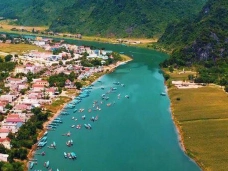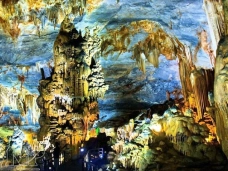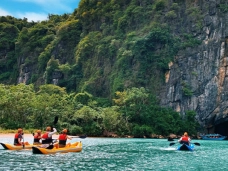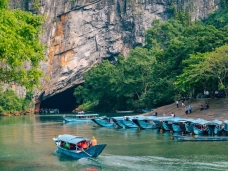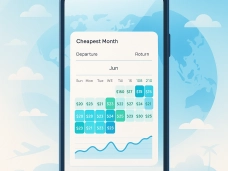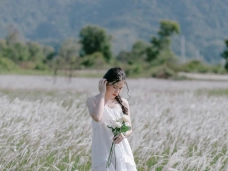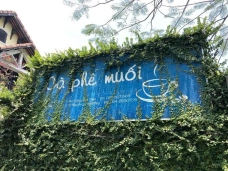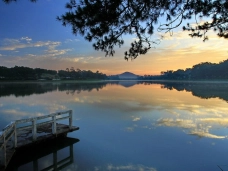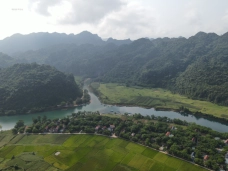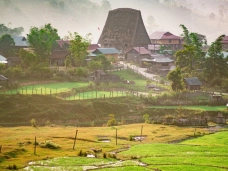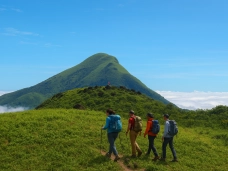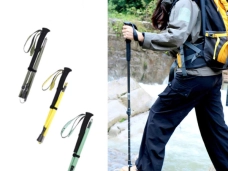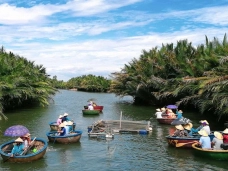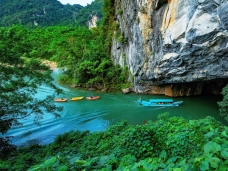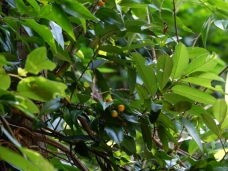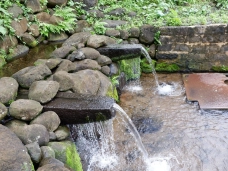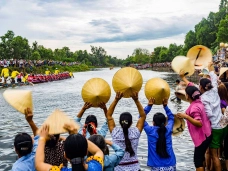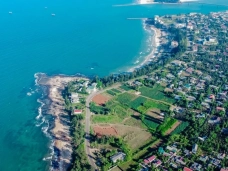Phong Nha Botanical Garden – A Destination Full of Experiences
18-05-2025 15:00
Main contents
- 1. Where is Phong Nha Botanical Garden and how do you get there?
- 2. Three Experience-Rich Trails
- 3. Scenic Highlights Along Each Journey
- 4. Supporting Services – Embrace Nature to the Fullest
- 5. Who Can Visit Phong Nha Botanical Garden?
- 6. What to Prepare Before Visiting Phong Nha Botanical Garden
- 7. Best Time to Explore Phong Nha Botanical Garden
- 8. Entrance Fee – A Contribution to Forest Conservation
- 9. Related Articles:
- 10. Tours to the Botanical Garden
Nestled within the Phong Nha – Ke Bang National Park, the Phong Nha Botanical Garden stands as a unique model of conservation, ecotourism, and environmental education in the North Central region of Vietnam. Spanning over 77 hectares, this garden is not only a sanctuary for hundreds of rare and endangered plant and animal species, but also an ideal experiential space for nature lovers, students, researchers, and the local community.
Designed as a “miniature forest,” the botanical garden represents the quintessential tropical rainforest ecosystem of Phong Nha – Ke Bang, featuring a rich variety of terrains, landscapes, and forest structures. What makes this destination truly special is the opportunity it offers to experience the wilderness up close—without needing to venture deep into the forest core. Visitors can enjoy a wide range of activities including exploration, research, leisure, and educational services—all within a single journey.
Where is Phong Nha Botanical Garden and how do you get there?
Phong Nha Botanical Garden is located at Kilometer 9 on Road 20 Quyet Thang, in Bo Trach District, Quang Binh Province, about 45 kilometers northwest of Dong Hoi City. Visitors can travel by car or motorbike to Phong Nha Town. From the Phong Nha – Ke Bang Tourism Center, continue another 12 kilometers to reach the garden.
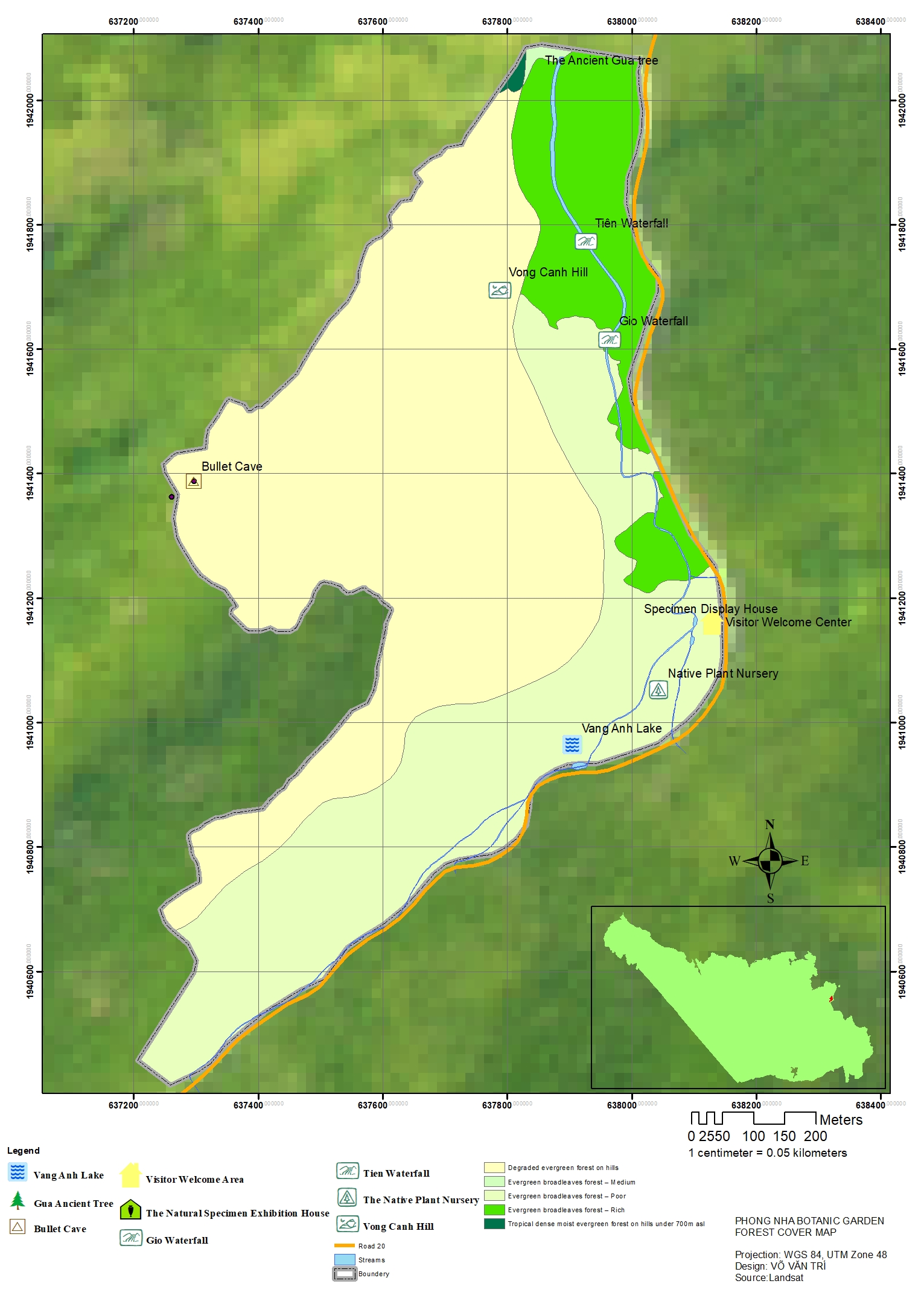
Three Experience-Rich Trails
Route 1 – Short, Relaxing, and Colourful (60 minutes – 600m)
Begin your journey at the Specimen Display House, home to rare plant, soil, rock, and animal specimens. Then, stroll through the orchid collection garden, where wild orchids bloom under the forest sunlight. Next, explore the native plant nursery, where small green shoots are cultivated to help restore the forest. The trail ends at Gio Waterfall, where you can take a stream bath, snap photos, or enjoy outdoor group activities.
Route 2 – A Balance of Exploration and Leisure (120 minutes – 1,600m)
From the Specimen Display House, orchid garden, and nursery, this trail leads you deeper into the garden’s functional zones, where the rainforest ecosystem remains nearly untouched. Vang Anh Lake provides a serene rest stop before you reach the cool waters of Gio Waterfall. This route is perfect for nature lovers who enjoy a light forest walk and wildlife watching.
Route 3 – Into the Heart of the Primal Forest (180 minutes – 5,000m)
This is the longest, most challenging, and most thrilling trail! Starting at the Exhibition House, you’ll follow a natural forest path into an ancient grove of rare hardwoods—home to towering green ironwood, Gụ lau, and Huỷnh trees with trunk diameters up to 3 meters. Along the way, keep an eye out for great hornbills and other wild animals.
The trail continues to the majestic Gio and Tien Waterfalls, where the cascading waters create a dramatic scene—an ideal spot to immerse yourself in the cool, pristine stream. The highlight of the journey is Bullet Cave, a significant historical relic of Vietnam. On the way, you might even spot the rare white-cheeked gibbon, an endemic species of Phong Nha – Ke Bang.
(Note: A guide is required for this trail.)
Scenic Highlights Along Each Journey
Phong Nha Botanical Garden is not just a place to "see" nature—it's where you feel the rhythm of the forest with every step and every view. A world of pristine wilderness unfolds, where stone, water, trees, and wind compose a magical symphony of green.
The Rare Tree Forest – a hidden “sanctuary of ancient giants” just 1 km from the center, where towering green ironwood, Gụ lau, and Táu đá trees rise skyward like silent storytellers of a hundred forest years.

Gio Waterfall – a 30-meter-high white ribbon of water cascading from the Ba Khe Stream, splashing cool mist into the jungle air. It’s the perfect spot for stream bathing, waterfall sliding, or simply letting your spirit drift with the sound of water rushing down a 50-meter wooden stairway nestled in the forest.

Vang Anh Lake – a tranquil mirror of emerald green nestled among shaded woods, framed by blooming yellow Vang Anh flowers. Here, you can quietly watch the clouds drift on the water’s surface as the breeze gently rustles the forest leaves.

The Natural Specimen Display House – the gateway to your journey, holding a treasure trove of rare biological and geological specimens that help unravel the evolutionary story and life history of this million-year-old forest.

The Interpretive Trail – a 4-kilometer path that leads you through zones of regenerated forest, primary forest, and natural rocky streams. It’s more than a trail—it’s a passage to ecological awareness and the timeless values of nature.
The Native Plant Nursery – where life begins anew. Here, you’ll witness tiny seedlings growing steadily, each one a promise to restore the forest's green mantle and sustain its harmony for future generations and the community.

Supporting Services – Embrace Nature to the Fullest
Beyond its forests, streams, and wildflowers, the Phong Nha Botanical Garden also offers thoughtful services to enhance your experience, including:
-
Breakfast, lunch, and refreshments served deep in the heart of the forest
-
Tree planting activities to leave your mark and help restore the forest's green legacy
-
Overnight camping, bonfires, and nighttime wildlife observation at Ba Khe Stream—an unforgettable experience far removed from the urban bustle
Who Can Visit Phong Nha Botanical Garden?
From international and domestic tourists to students, researchers, and local communities—everyone can discover something personally meaningful in this natural haven.
A small note: To preserve the quality of the experience, each group is limited to no more than 30 visitors per tour.

What to Prepare Before Visiting Phong Nha Botanical Garden
To ensure a safe and fulfilling experience at Phong Nha Botanical Garden, it’s important to be well-prepared with a few essential items. Comfortable sneakers or hiking shoes are a top priority, as most of the trails are forest paths with uneven terrain and slopes.
Choose lightweight, breathable clothing that allows easy movement—avoid dresses or overly long pants that might get in the way. You should also bring mosquito repellent, a wide-brimmed hat, drinking water, a small towel, and some light snacks, especially if you’re visiting in the morning or late afternoon.
For nature observers or photography enthusiasts, binoculars, a camera, and a field notebook will be invaluable companions. A little thoughtful preparation will make your forest journey safer, more enjoyable, and truly memorable.
Best Time to Explore Phong Nha Botanical Garden
The ideal time to visit is from March to August, when the weather is dry, skies are blue, waterfalls are clear, and the forest is lush with greenery. This is the perfect season for hiking, sightseeing, photography, and exploring tropical ecosystems.
However, from December to February, right after the rainy season, offers a completely different but equally intriguing experience. The forest becomes misty, mystical, and alive with fungi, lichens, and moisture-loving plants—painting an enchanting picture of primal wilderness.
Each season has its own charm, but the dry season remains the top choice for those seeking a full nature immersion.
Entrance Fee – A Contribution to Forest Conservation
Tickets to Phong Nha Botanical Garden range from 80,000 to 120,000 VND per person per visit, a small price for an enriching journey into nature and a meaningful step in preserving a rare ecosystem.
Children under 1.3 meters tall enter for free. Groups of students receive a 50% discount.
This is more than just an entrance fee—it’s a small action toward a big responsibility for our environment.
Phong Nha Botanical Garden is not just a destination—it’s a profound connection between people and nature. Every step is a lesson; every landscape, a story. Come not just to visit, but to feel, to understand, and to truly love the living forest.
“In the heart of the forest, we are no longer visitors—we become part of it.”
Related Articles:
-
Starting Your Journey into Phong Nha Botanical Garden
-
Phong Nha Botanical Garden – A Nature Trekking Experience
Tours to the Botanical Garden
-
Dong Hoi – Tam Co Cave – Paradise Cave – Botanical Garden – Dong Hoi
-
Dong Hoi – Tam Co Cave – Botanical Garden – Phong Nha Cave – Dong Hoi
-
Paradise Cave – Mooc Spring – Phong Nha Cave – Botanical Garden – U Bo Peak
-
Phong Nha Cave – Botanical Garden – Tam Co Cave – Paradise Cave – Mooc Spring
Tuệ Minh
Comments
Comments (Total 6)
Adam Guilt
09-06-2025
Nguyen Phong
23-05-2025
An Nguyen
06-06-2025
Nguyen Phong
23-05-2025
Phong Nha Viet
06-06-2025
Phong Nha Viet
06-06-2025
Related Articles
13-12-2025
Giải mã tên gọi Phong Nha – Kẻ Bàng
26-11-2025
Khe Sanh – A Journey into Memory
05-11-2025
8 Unmissable Instagram Spots in Da Lat
28-10-2025





